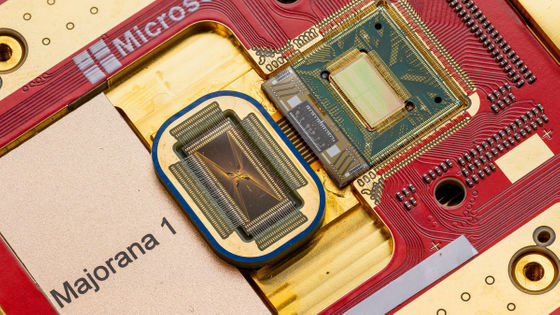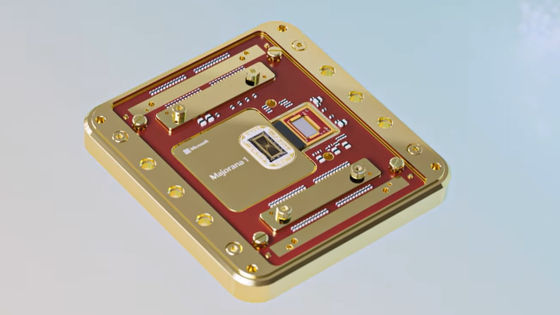Microsoft claims breakthrough with quantum processor 'Majorana 1,' but physicists are skeptical, saying 'the published paper lacks data'

On February 19, 2025, Microsoft announced its first quantum processor,
Microsoft claims quantum-computing breakthrough — but some physicists are sceptical
https://www.nature.com/articles/d41586-025-00527-z
Shtetl-Optimized » Blog Archive » FAQ on Microsoft's topological qubit thing
https://scottaaronson.blog/?p=8669
Physicists Question Microsoft's Quantum Claim - WSJ
https://www.wsj.com/science/physics/microsoft-quantum-computing-physicists-skeptical-d3ec07f0
A quantum computer uses quantum bits that can express 'quantum mechanical superposition states of 0 and 1' in addition to 0 and 1, rather than the conventional bits that take a single value of 0 or 1, to process information at a much faster speed than existing computers. However, quantum bits have the disadvantage of being 'vulnerable to environmental changes during operation.' In addition, calculations require 'measurements,' but there is also the problem that the state of the quantum bits changes due to measurements.
Therefore, Microsoft focused on 'topological quantum computers' that digitally control error-resistant topological quantum bits. This is expected to improve processing speed, size, and controllability by creating more stable quantum bits than usual and reducing the need for error correction. However, the 'Majorana particles' required for this topological quantum computer do not exist in nature and must be artificially created using magnetic fields and superconductors.
Normally, fermions such as electrons and protons have 'antiparticles'. Majorana particles are particles with the mysterious property of being identical to their antiparticles, and their theoretical existence was pointed out and their existence was demonstrated in 2018. As a result, Microsoft succeeded in developing a ' topological superconductor ' using indium arsenide and aluminum. Microsoft reports that quantum bits using Majorana particles can now be controlled more simply and digitally, making it easier to scale up.
Microsoft unveils quantum processor 'Majorana 1' and hopes it will 'solve important industrial-scale problems within a few years' - GIGAZINE

'We need a quantum architecture that can achieve more than one million qubits and a system that can perform trillions of fast and reliable operations, but this announcement shows that this future is within a few years, not decades,' Microsoft said, claiming that Majorana 1 is a breakthrough in quantum computing.
At the same time as this announcement, Microsoft also published a paper on Majorana 1, but some experts have pointed out that the paper 'does not provide data to support the claims.'
Georgius Katsaros, a physicist at the Austrian Institute of Science and Technology, criticized, 'This paper does not contain additional data from quantum bit operations. There is little I can comment on without seeing it. ' Also, Vincent Murik, a physicist at the Helmholtz Research Center, said, 'At this level of paper, the approach to building a quantum computer based on topological qubits using Majorana particles, as pursued by Microsoft, does not work.'
'We are scientists, and we believe things by actually seeing the data,' said Elena Kulinovaya, a quantum physicist at the University of Basel. 'Quantum computing is a very difficult field, but Microsoft needs to provide the data properly,' she said. 'This paper is in the advertising realm, not the science realm. The preliminary data published this time seems like promising evidence of topological qubits, but it's difficult to be sure without careful analysis of more detailed data.'

Many research groups have reported observing the existence of Majorana particles, which form the basis of Majorana 1. However, some papers have excluded data that are not useful for proving the hypothesis as 'outliers' and extracted only data that is likely to be useful, and many papers showing the existence of Majorana particles have been retracted or disproven.
A researcher of 'Majorana particles' explains why papers on quantum computers are being retracted one after another - GIGAZINE

'We are committed to publishing our research in a timely manner and protecting the company's intellectual property,' said Chetan Nayak, a researcher at Microsoft. 'As measurements become more complex, it becomes harder to explain the results with traditional non-topological models. There may never be a single moment where everyone agrees.'
Related Posts:






